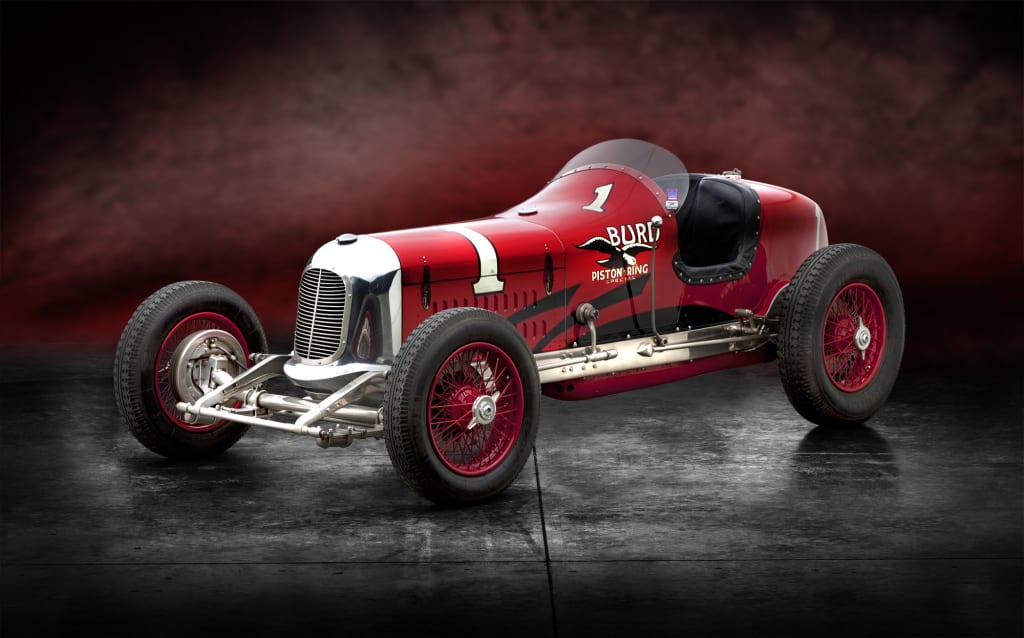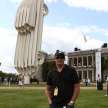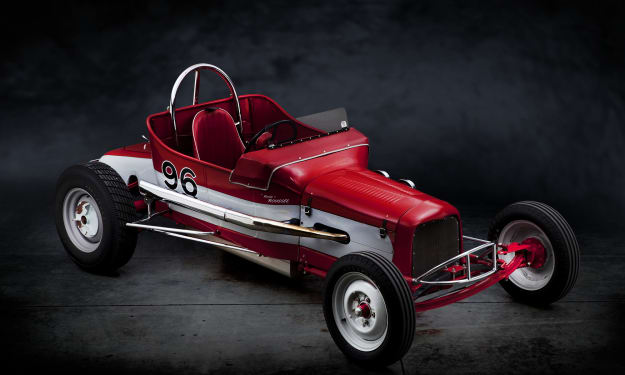Echoes of Speed: The Legendary Miller Racer
From the Tracks of Yesterday to the Halls of History: The Car that Defined an Era

By Dean Kirkland
Racing history is replete with iconic figures and legendary names, each leaving their unique imprint on the tracks of time. Among these luminaries, the name 'Miller' shines exceptionally bright, casting a long shadow of influence and admiration. When Tom Malloy, a connoisseur of racing's golden era, was questioned about his rationale behind acquiring the 1934 Miller 'BURD Piston-Ring Spa.', his response was both profound and simple: "Because it's a Miller." For those deeply entrenched in the world of motorsports, the name 'Miller' evokes a sense of awe and respect, akin to the reverence 'Edison' commands among scientists or the admiration 'Beethoven' garners among classical music enthusiasts.
Harry Miller, a man of humble beginnings with no formal academic accolades to his name, rose through the ranks to become a titan in the racing world. His innovative spirit, combined with an innate ability to envision and create, led to designs that were nothing short of revolutionary. His engineering masterpieces and unparalleled manufacturing techniques birthed a lineage of race cars that not only dominated their contemporaries on the racetracks but also clinched the coveted top spot at the Indy 500, an astounding fifteen times between the years 1921 and 1941.
The 1934 Miller Indianapolis 'BURD Piston Ring Special' is a testament to this legacy, representing a harmonious blend of mechanical prowess and artistic elegance. Tom Malloy, with a glint of nostalgia in his eyes, often remarks, "Its beauty and power are timeless, captivating the hearts of both young and old, just as it did when it first graced the tracks." This racing behemoth was powered by the renowned Offenhauser (Offy) engine, which also showcased its might in the 1935, '36, and '37 Indy 500 races. The creation of the 'Offy' engine was the brainchild of the ingenious Fred Offenhauser, a man who was deeply influenced by the teachings, philosophies, and innovations of his mentor, Harry Miller. Their collaborative genius culminated in the birth of the iconic four-cylinder motor, which became synonymous with power, precision, and performance, encapsulating the very essence of the Miller racing dynasty.
The Miller 'BURD Piston Ring Special' was not just another race car; it was an engineering marvel, distinguished by its unique features and unparalleled performance. Central to its design was the inclusion of specialized piston rings, meticulously crafted by the BURD Piston Ring Company, located in the industrial heart of Rockford, Illinois. These weren't just any piston rings; they were precision-engineered masterpieces that ensured the car's remarkable fuel efficiency. Even amidst the high-octane environment of Indy racing, the car boasted an enviable fuel consumption rate of 10 3/4 miles for every gallon of gas, while maintaining an oil consumption of a mere gallon and a half. This was a testament to the car's advanced engineering and the quality of the BURD piston rings.
Diving deeper into the technical specifications of this iconic vehicle reveals a symphony of engineering brilliance:
Chassis: Crafted from a Miller Aluminum Rail Frame, it provided the foundational strength and agility to the car.
Body Design: A sleek two-man Indianapolis racer configuration, optimized for speed and aerodynamics.
Engine Dynamics: Powered by the legendary Offenhauser #3PL engine, it had a displacement of 270 cubic inches and featured 4 robust cylinders.
Performance Metrics: The engine roared with a power output of 275 hp at 5,900 rpm and delivered a torque of 290 ft. lbs at 4,200 rpm. Its resilience was evident with a maximum RPM of 6,200.
Transmission: Equipped with a Ford Model T-Manual gearbox, it featured a forward 2-speed mechanism.
Velocity: The car was designed for speed, achieving a top velocity of approximately 118 mph.
Physical Dimensions: With a length of 180 inches, a width of 60 inches, and a height of 52 inches, it weighed between 1,500 to 1,600 lbs, striking a balance between size and speed.
Tire Specifications: The front tires measured 5.50 x 18, while the rear ones were 7.50 x 18, providing optimal grip and stability on the racetrack.
The genesis of this racer traces back to 1934 when it was meticulously crafted by the collaborative efforts of Lou Moore, Emil Died, and Ernie Weil. This creation was intended to replace the Foreman Axle car, which had met an unfortunate fate in a previous race. Initially, Lou Moore donned multiple hats, being both the owner and the primary driver. However, as 1937 rolled in, Mauri Rose took over the driving responsibilities. Under his expert hands, the car demonstrated its racing pedigree by securing the eighth position in the qualifying rounds of the Indy 500, clocking a speed of 118.540 mph. Yet, racing is unpredictable. Despite its stellar performance and potential, a malfunctioning oil line halted its journey after 127 laps, relegating it to the 18th position.
The illustrious history of the car is not just defined by its engineering marvels but also by the legendary racers who steered it to victory. The Miller 'BURD Piston Ring Special' became the chosen vehicle for a pantheon of Indy/AAA National Champions. These weren't just any racers; they were the titans of their time. Kelly Petillo, with his aggressive driving style; Wilbur Shaw, known for his strategic race approach; Floyd Roberts, the fearless competitor; Bill Cummings, with his impeccable track record; Tony Gulotta, the consistent performer; and Cliff Bergere, whose name became synonymous with speed, all chose this car as their racing companion. Adding to this elite list was the skilled riding mechanic, Johnny Pawl, whose contributions behind the scenes played a pivotal role in the car's success.
1936 was a particularly noteworthy year for the 'BURD Piston Ring Special.' Under the expert hands of Mauri Rose, the car not only clinched a National Championship title but also tasted victory at the prestigious Syracuse race. Furthermore, it secured a top American finish at the Vanderbilt Cup, a testament to its unmatched prowess on the racetrack.
Fast forward to 2006, the car's legacy found a new guardian. Tom Malloy, recognizing the car's historical significance and its contribution to the world of racing, decided to add it to his collection. His acquisition wasn't just a purchase; it was a commitment to preserving a piece of racing history for posterity.
Today, the car has found a fitting home at the NHRA Museum in Pomona, CA. As visitors walk past it, it stands as a silent yet powerful testament to a bygone era. It serves as a reminder of a time when passion, innovation, and the indomitable spirit of racers shaped the world of motorsports. Each curve, each bolt, and each scar on the car tells a story, echoing the tales of legends who once raced it to glory.
About the Creator
Dean Kirkland
Dean Kirkland, seasoned director & cinematographer. With a passion for cars & visual storytelling, Dean's work resonates, leaving a lasting impact. Dive into a world where every frame tells a story.






Comments
There are no comments for this story
Be the first to respond and start the conversation.